Labelbox•April 21, 2022
Streamlined data management and key editor improvements
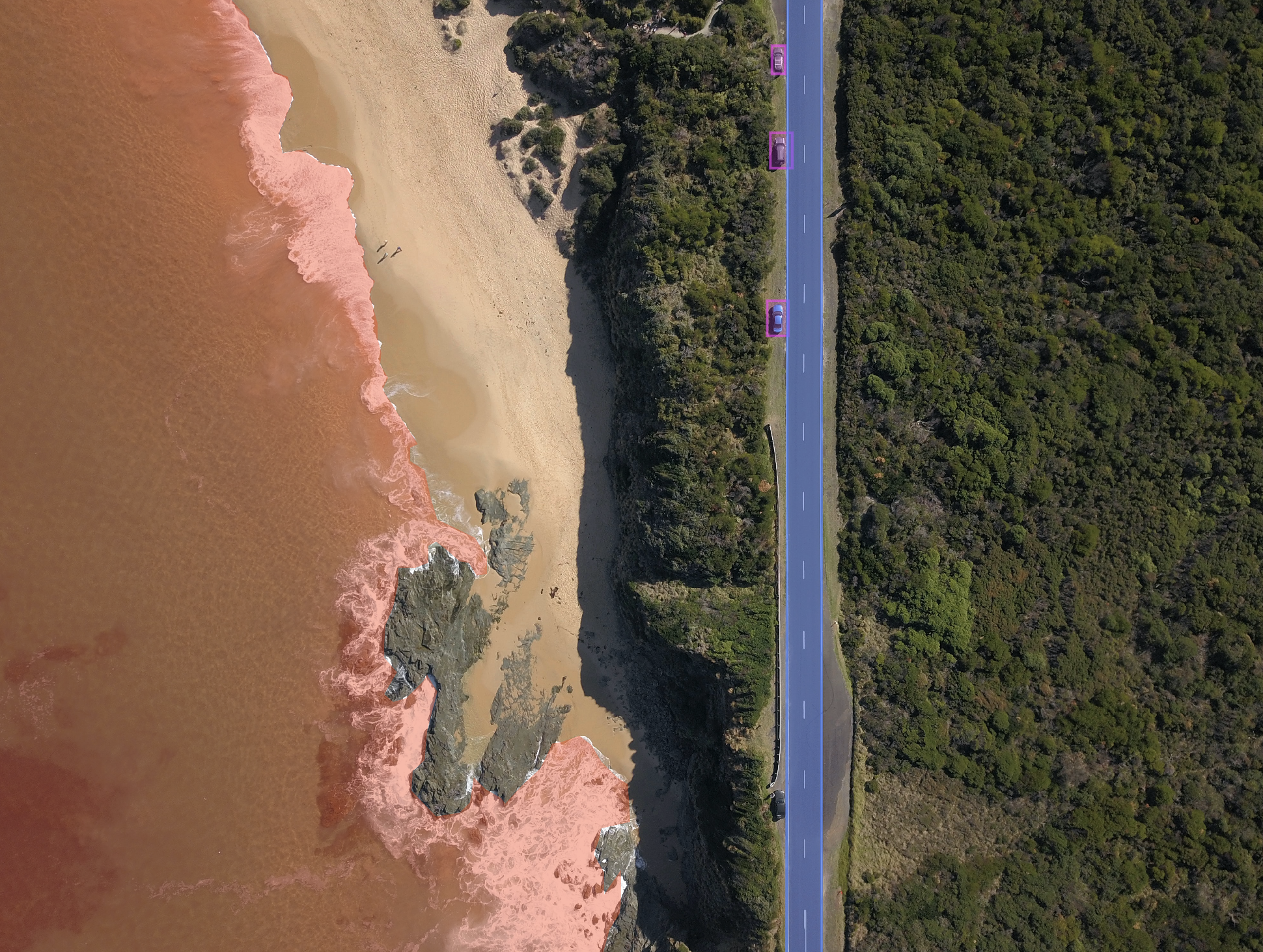
We’ve continued to streamline essential workflows for ease of use while adding new capabilities to improve collaboration and labeling quality. Workforce customers can now receive in-app notifications on project updates through our platform and we've updated the dataset experience by merging the datasets tab into Catalog for a more data-centric workflow. We’ve also made some key updates to our editors that enable more complex ML use cases and improve usability. Read more to learn about creating relationships in an image, improvements to our tiled imagery editor, and our new Labelbox Community page.
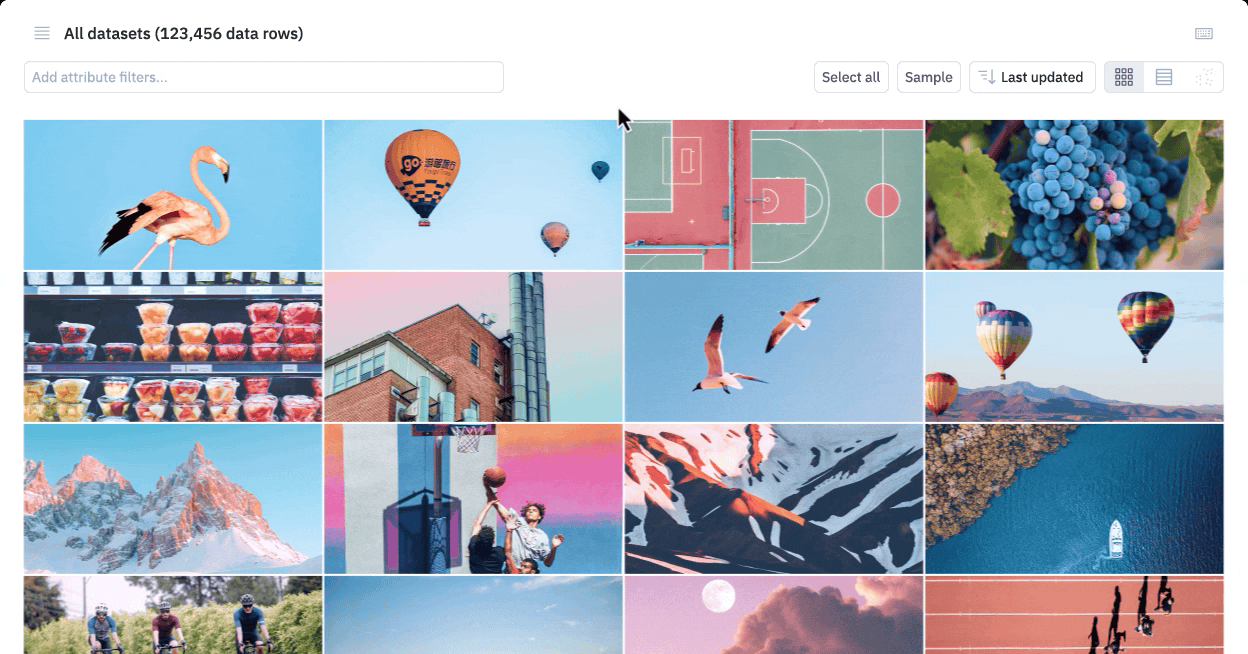
Manage datasets and curate data with Catalog
Datasets are now in Catalog
Catalog is the central location for visualizing and managing your data. You can quickly search for data with intuitive filters and discover new patterns using similarity search and model embeddings. We’ve streamlined the dataset experience by merging the datasets tab into Catalog, so there’s now a single launchpad for all of your data-centric workflows, whether you’re adding data to Labelbox or curating data for a labeling project. To access, modify, or add new datasets, just go to Catalog and use the datasets panel on the left.
Search for data with improved filtering
We’ve updated filtering in Catalog to offer more powerful search syntax while improving speed and responsiveness. You can now create more complex filters with AND and OR filter logic operators. Create an OR operator by clicking “or” next to your filter, and add an AND operator by adding a new row of filters from the filter menu. This new filter syntax gives you more power and flexibility when curating data for labeling tasks.
Sort data in Catalog by date
We recently introduced the ability to sort data in Catalog by the date it was added to Labelbox. This lets you more easily surface newly added data for labeling projects and helps you keep track of your upload history.
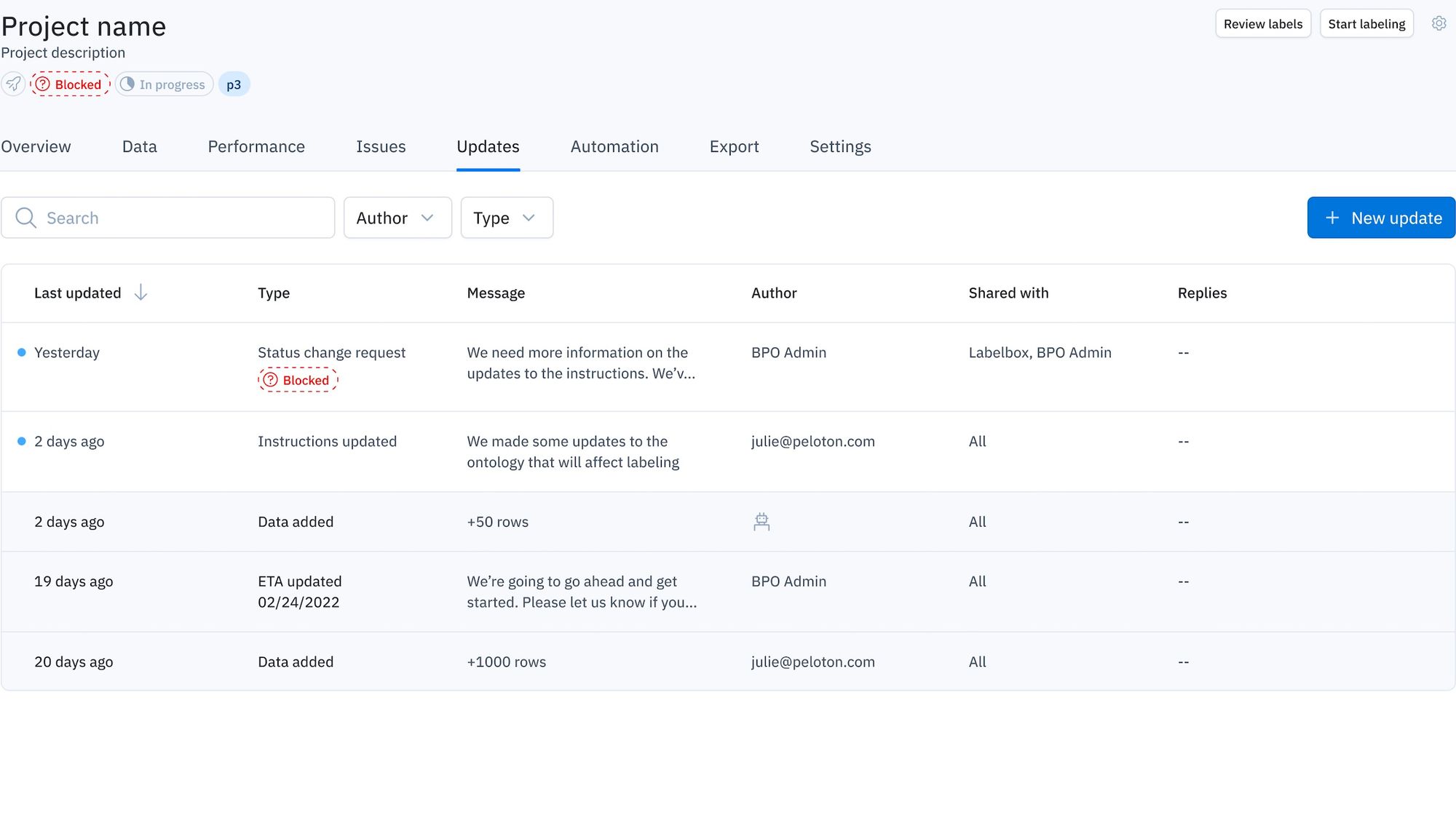
In-app updates & notifications for labeling teams
Closed Beta
Labelbox Boost is a managed solution that can provide customers with world-class workforce and dedicated labeling operations expertise. Labelbox provides a collaborative platform for labeling services and is a great fit for enterprises that are looking for an easy-to-use platform and high-quality labeled data.
We’re excited to announce that Labelbox workforce customers working with our vetted labeling partners can soon create and receive regular updates on project progress through the Labelbox platform. Rather than rely on numerous external tools, such as Gmail, Slack, or Google Docs, our new system facilitates three-way communication between workforce customers, labeling partners (BPOs), and our Labeling Operations team to enable more streamlined communication.
All communication can be found in the new “Updates” tab within a project, giving teams maximum visibility on a project’s progress. Updates are organized according to function: Progress update, General update, Status update, Instructions update, Issues added & ETA changed. This allows for better organization and searchability.
Learn more about Boost.
Editor Updates
We’ve made several improvements to our editors.

Define a relationship between objects in an image
Now available for all customers, labelers can create relationships between any two annotations in an image, excluding segmentation masks.
For a model to fully understand an image, it must often account for relationships between objects within the image. This tool enables you to specify a relationship between two objects in your image to help train models that need to understand how different objects are related to each other. A relationship between two objects can be unidirectional or bidirectional, and nested classifications can be used to further define the relationship.
There are several use cases in which defining a relationship between objects in an image could be beneficial. For example, an agricultural use case may require a model to distinguish the most efficient picking point of a fruit. By identifying the relationship between the fruit and its optimal picking point, the model can be trained to not only recognize the most effective picking point, but also understand the associated object that they are picking.
Other example use cases could include specifying the location of a vessel in relation to a dock or specifying the relationship between people and machinery on a worksite. You can read more about image annotation relationships in our documentation.
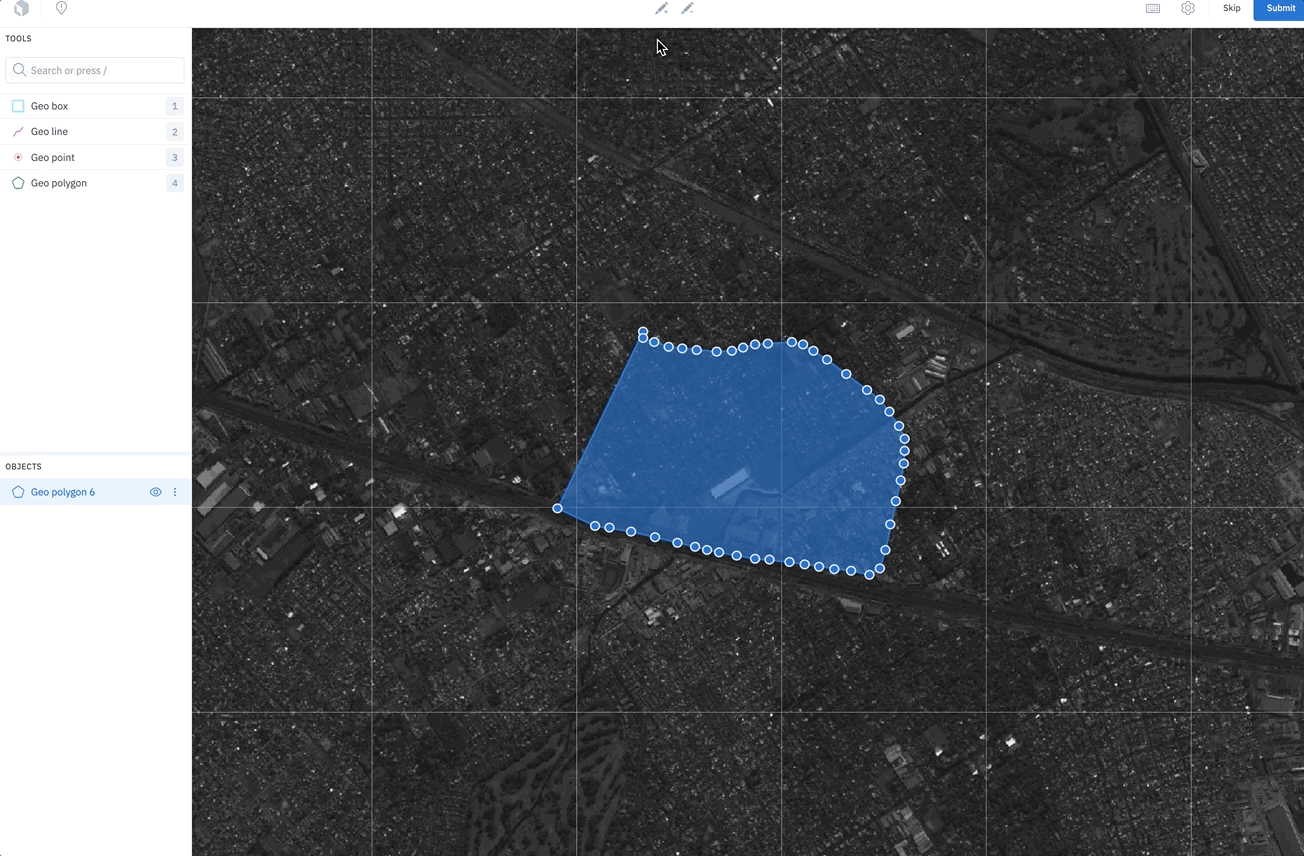
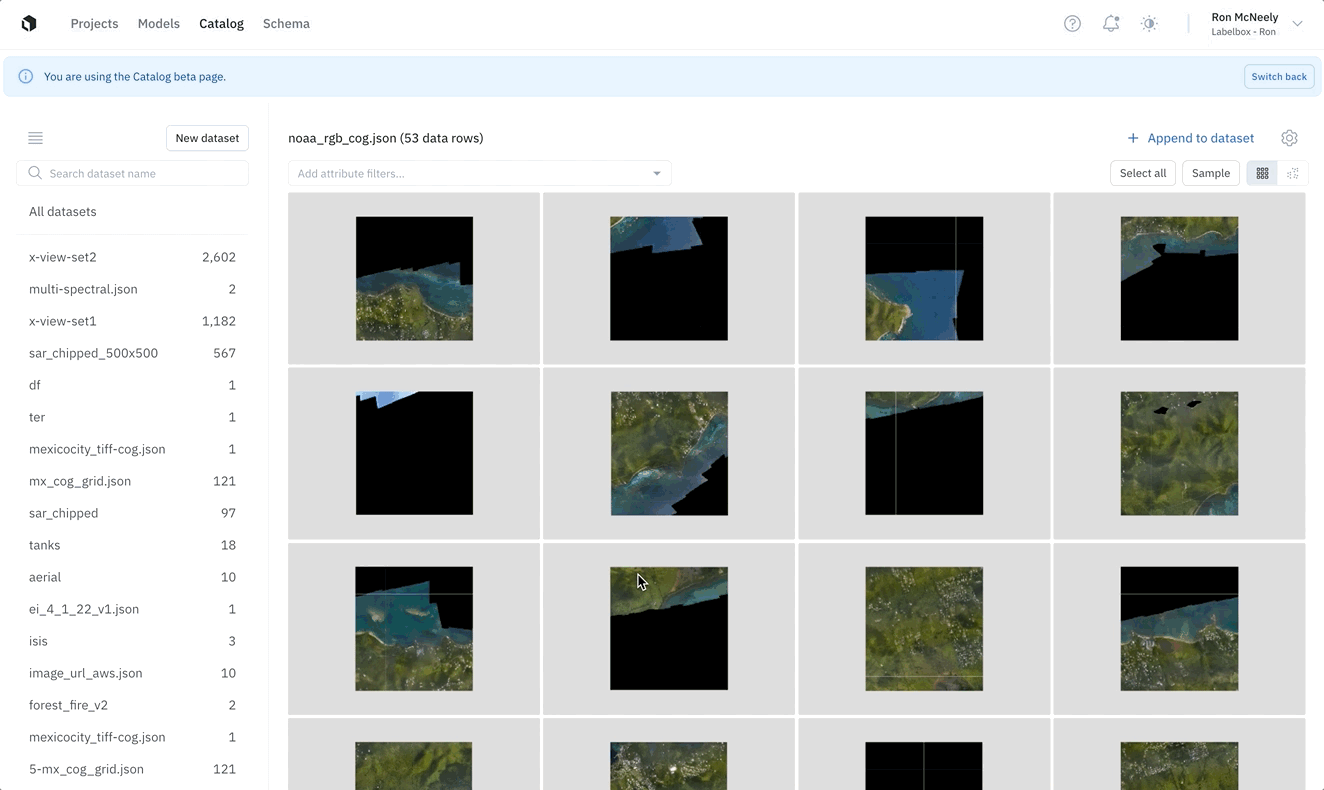
Create segmentation masks with our polygon pen tool and easily identify datasets with thumbnails in Catalog.
Label geospatial data faster than ever
We’re excited to announce improvements to our tiled imagery editor.
We’ve made updates to our polygon tool that enables users to freehand draw polygons and easily correct any errors with our pen tool. You can intuitively draw necessary shapes and create segmentation masks faster than ever. This update also makes exporting tiled imagery polygons even easier, returning the vertices in the native coordinate system of your geo file. Read more about geospatial and tiled imagery annotations in our documentation.
We’ve also made it easier for you to identify your datasets with thumbnails and previews now available for newer geospatial formats (NITF and COGs). Being able to preview images makes it easier for you to visualize data in Catalog and to find the most relevant data rows for labeling.
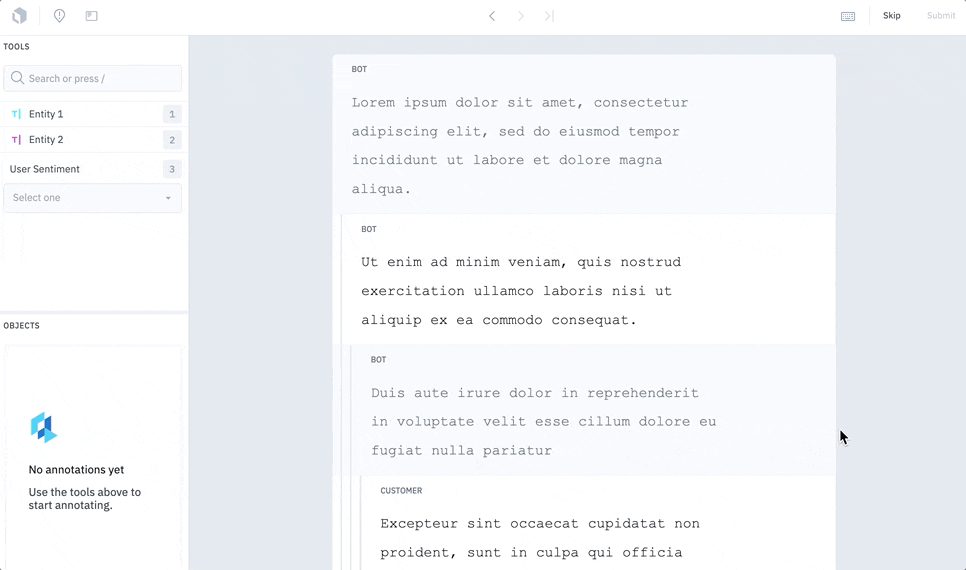
Label and train models on conversational text
Sign up for the Closed Beta
We’re launching a new editor to help our customers better annotate text in the context of conversations. With this solution, you’ll be able to leverage advancements in NLP models to build custom, tailored experiences for your customers in order to improve support metrics, create delightful customer experiences with their company, and preserve brand identity.
Our customers are using this editor to help build models that can automate support conversations and moderate community posts for inappropriate content.
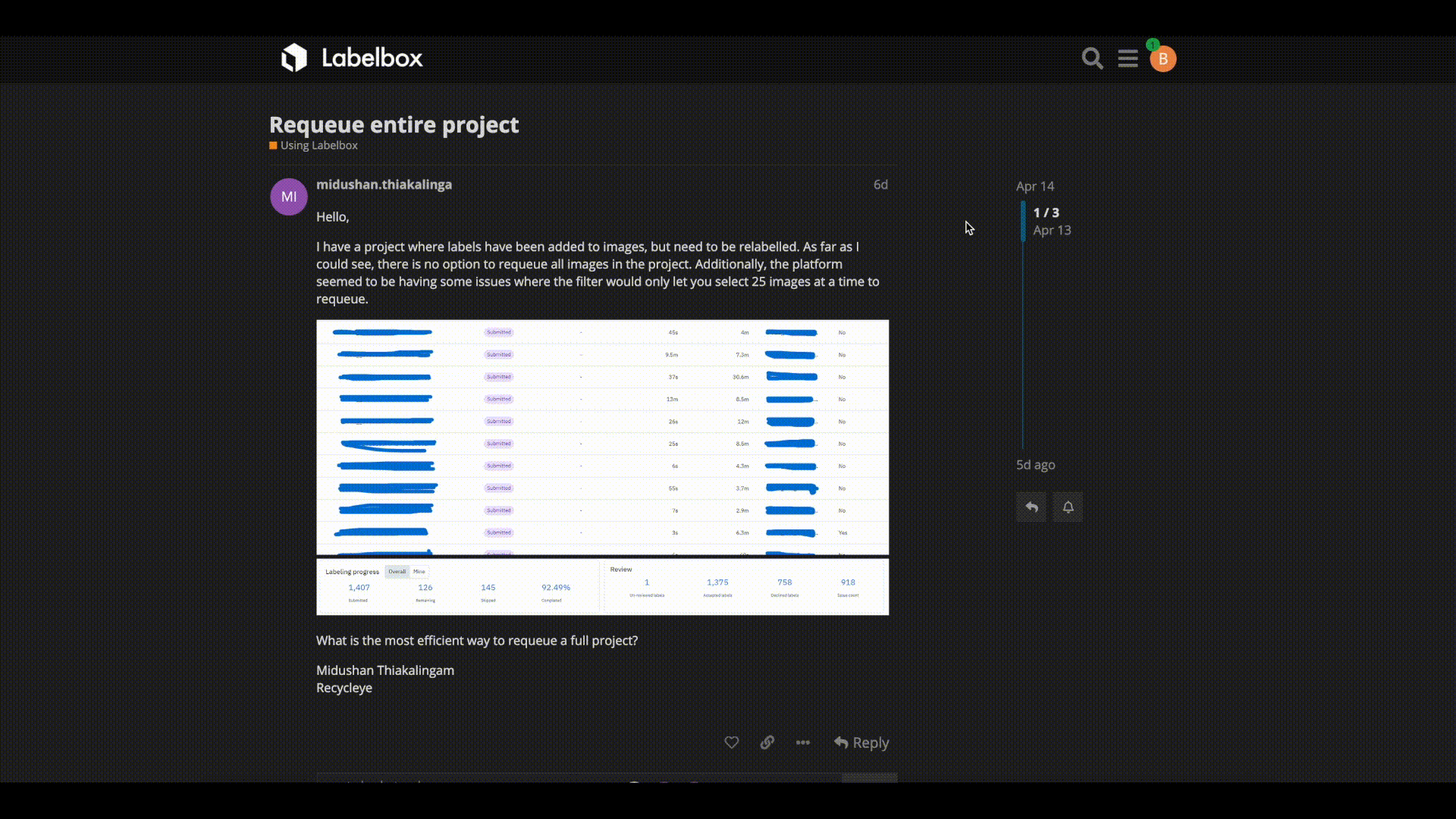
Learn and share insights with the Labelbox Community
We’re excited to announce our new Labelbox Community page!
The Labelbox Community is a place where Labelbox users can share their experiences, ask questions, and discuss Labelbox best practices. While you don’t need a Labelbox account to view our page, you’ll need a Labelbox account to post or comment on threads.

 All blog posts
All blog posts

